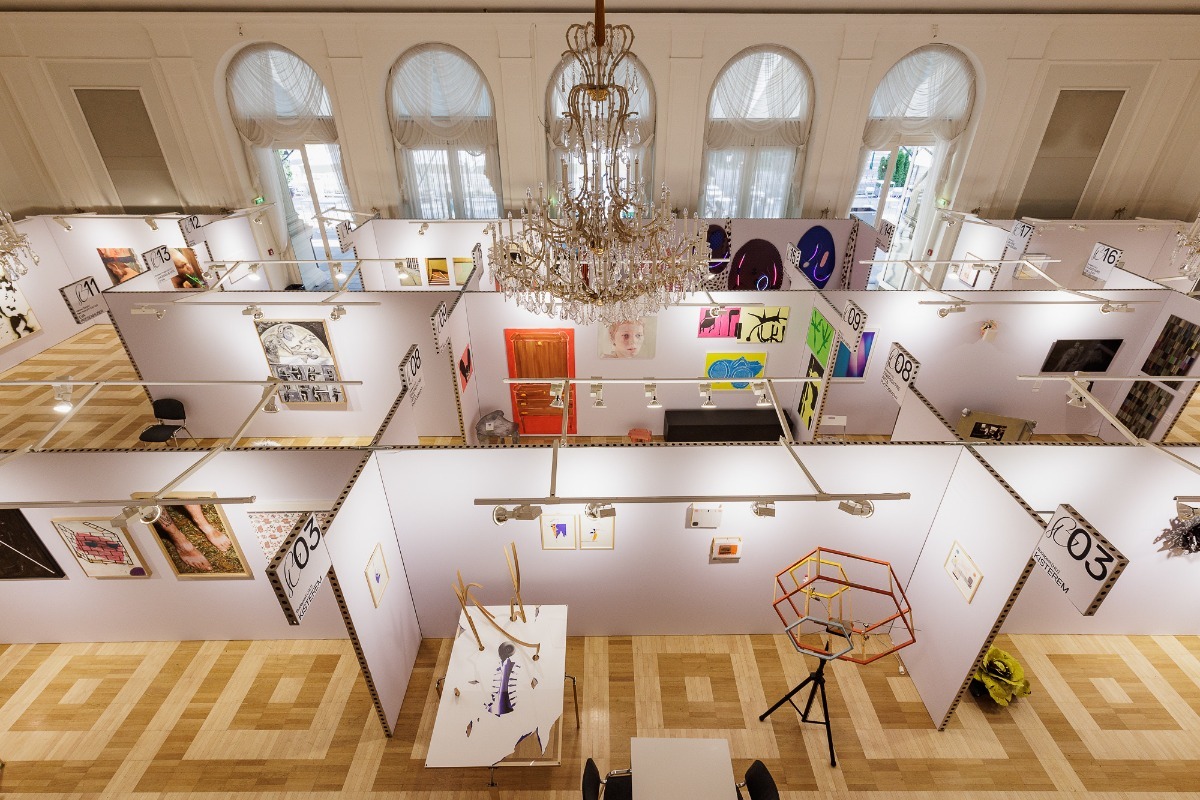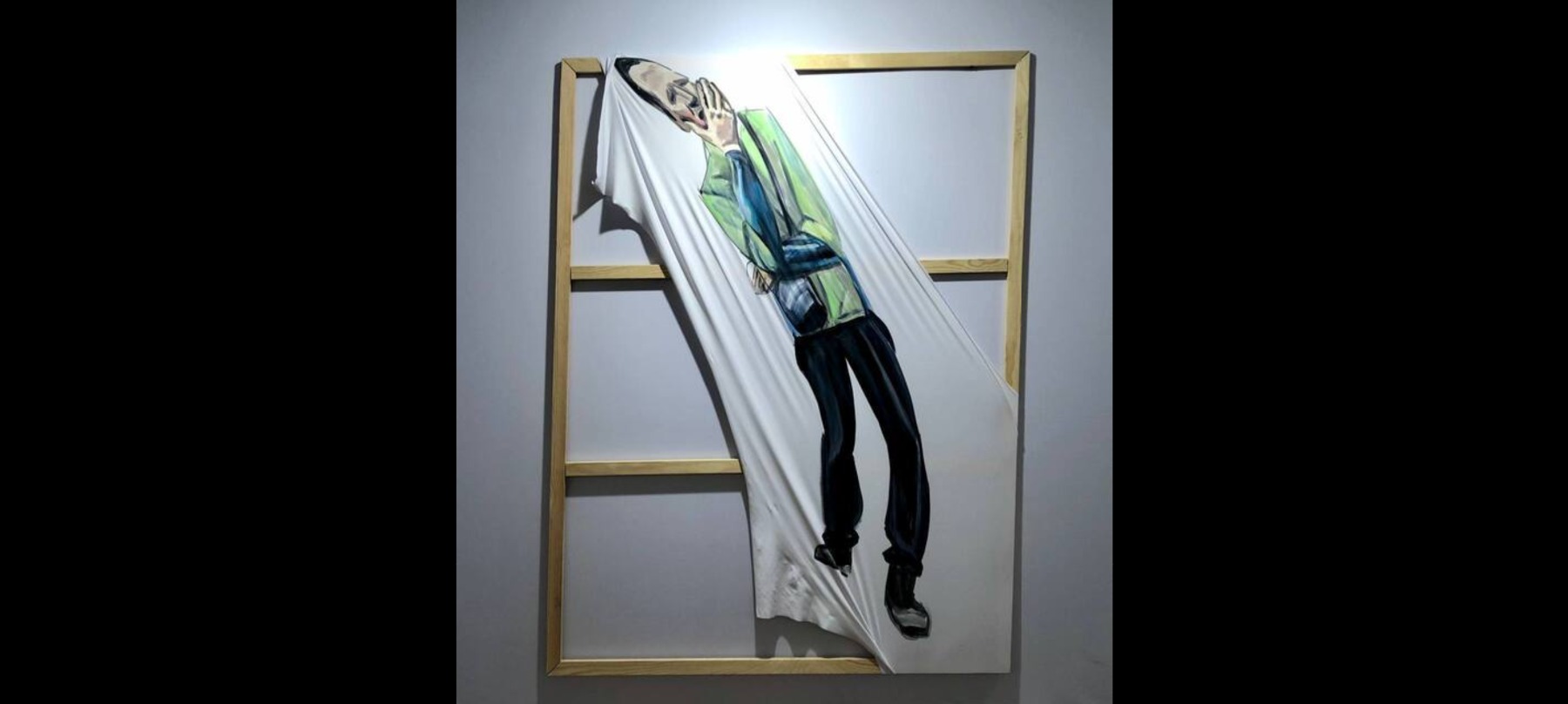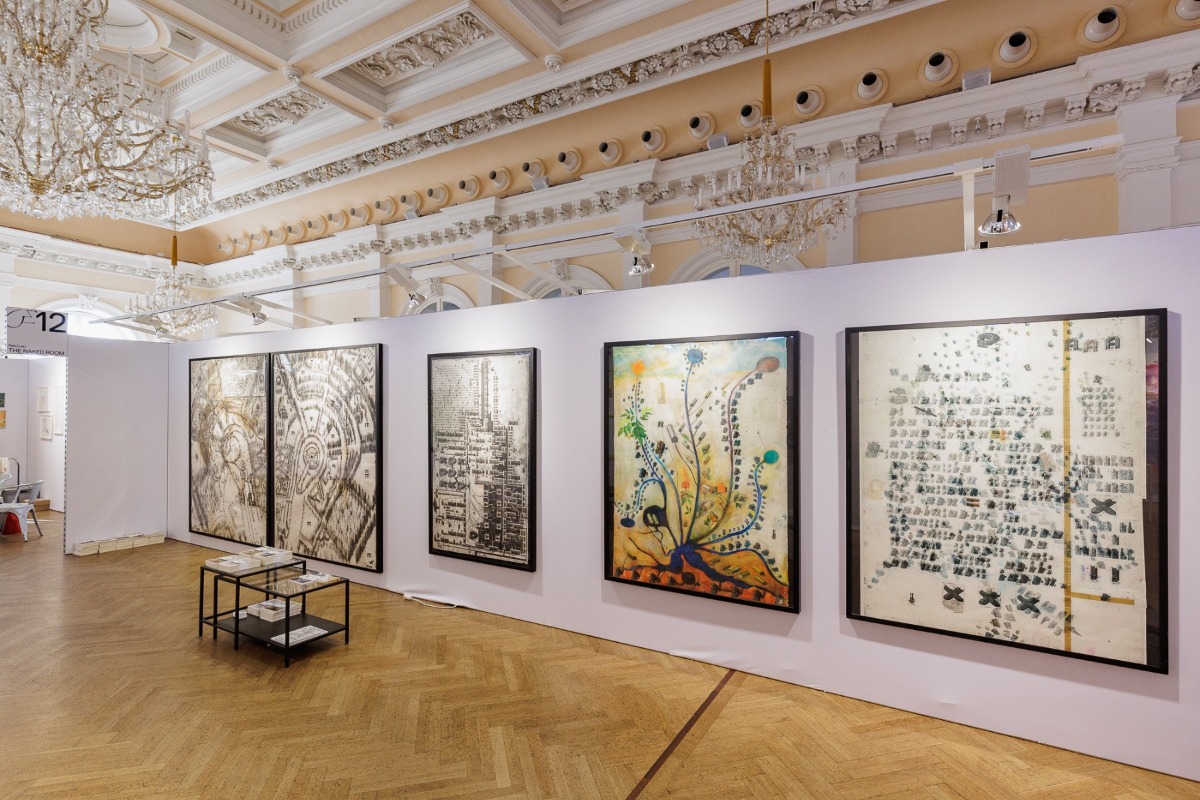
A New Beginning
A look back at the viennacontemporary 2022 art fair
From September 8 to 11, the Austrian capital Vienna hosted viennacontemporary 2022, a fair dedicated to the contemporary art scene of Central and Eastern Europe. 10 000 visitors came to the fair’s new venue – Kursalon, a 19th-century neo-Renaissance concert hall – to appreciate the work of 62 galleries from 17 countries. Overall sales results are said to have been successful for all participating galleries.
A brief history
With several transformations, the international contemporary art fair viennacontemporary has been taking place in the Austrian capital since 2006 (up to 2014 it was known as VIENNAFAIR). This year’s edition marked perhaps the most radical change in the fair’s quantitative and qualitative format, and a complete restructuring of the fair.
It is no secret that in recent years, the fair’s once loudly proclaimed goals of becoming a support platform for Eastern and Central European galleries on their way to the Western market somewhat diminished. The region’s galleries felt that the fair’s collecting circles were rather local, the fair had fallen off the radar of the most influential international collectors, the fair’s ability to competently represent and cover the art scene of the region became questionable, and the presence of Russian galleries at the fair was becoming increasingly more prominent.
Markus Huber, Managing Director of viennacontemporary, addresses the media. Photo: Agnese Čivle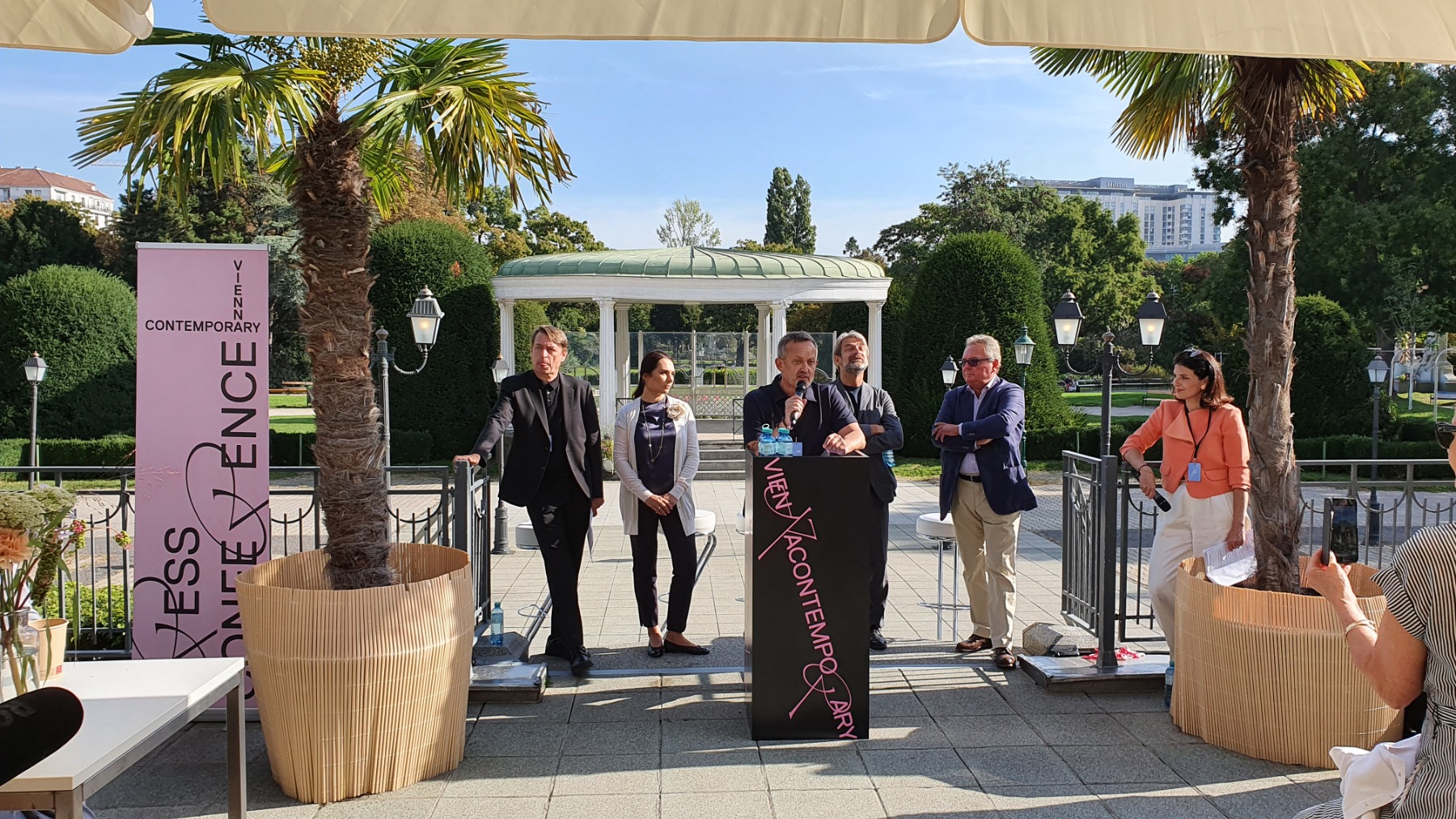
To facilitate the fair’s rise to a higher level and to secure more state involvement and support in the organisation of the fair, the planned strategic move of the fair’s owner, Russian businessman Dmitry Aksenov, was to hand over part of the fair to the state. However, Russia’s aggression in Ukraine in February of this year jettisoned the transition process to the point of Aksenov handing over the art fair entirely to the state, and with viennacontemporary having now become a fully non-profit organisation.
The future, in a nutshell
This marks the beginning of a new era for the fair. A new reboot. Like any reboot, it should begin with the acknowledgement of past failures. Markus Huber, Managing Director of viennacontemporary, has repeatedly admitted in public speeches that the fair has been ignorant of the East, and Slovakian Boris Ondreička, Artistic Director of the fair, has said that “it will take some time to rehabilitate the reputation of the fair from its previous history of comme ci comme ça”.
At the top of the list of changes implemented in this edition of viennacontemporary are: redefinition of the quality of the content; the creation of a distinctly international team; a special set of events dedicated to Ukraine; and the complete withdrawal of Russian galleries. Ondreička also described the special set of parameters developed and applied to the presentation programme for emerging artists, ZONE1, in terms of the “mirror stage” conceived by French psychoanalyst and psychiatrist Jacques Lacan – a kind of critical or self-critical thermometer within the fair itself. The transformative plans for the fair include further on-the-ground research of the relevant regions, with the team heading to the Baltic States next month.
Kursalon in Vienna’s Stadtpark. Photo: viennaconteporary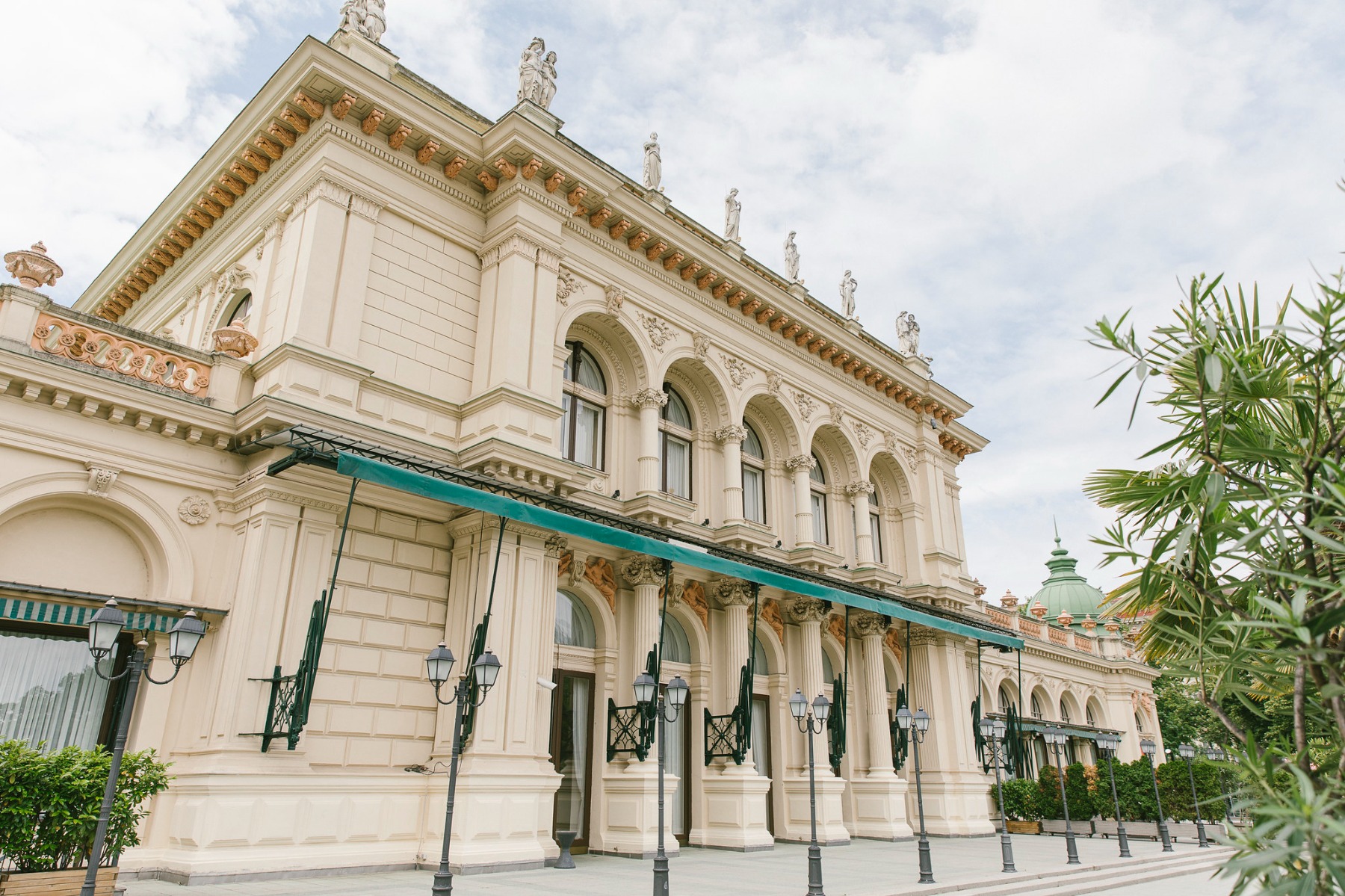
viennaconteporary exhibitions in the Kursalon’s ballroom. Photo: Agnese Čivle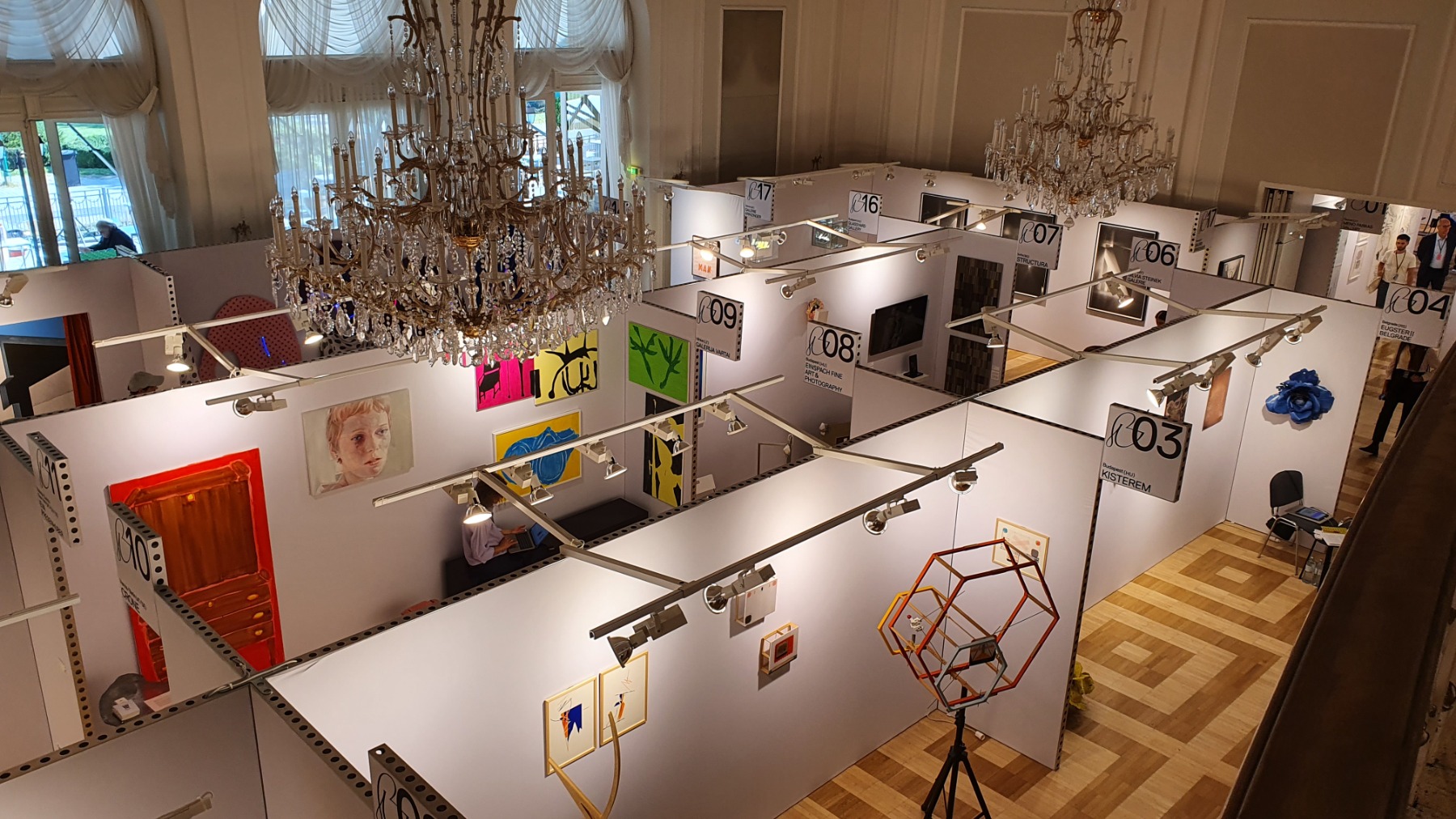
A “boutique” fair in a beautiful neo-Renaissance setting
The most obvious changes to this year’s viennacontemporary fair were revealed in its small “boutique” format. If in former editions of the fair the number of galleries usually exceeded a hundred, now there were only 62 carefully selected and specially invited galleries from 17 countries representing 195 artists.
The boutique format was well matched by the new venue – the magnificent neo-Renaissance Kursalon, which boasts as its crowning achievement the honour of hosting the first public concert ever given by Johann Strauss. The fair inhabited all three floors of this architectural jewel of Stadtpark (City Park). A portion of the lower ground floor was dedicated to ZONE1; curated by the young and progressive Slovenian Tjaša Pogačar, ZONE1 represented nine artists under 40 who either live, work, or have received their education in Austria.
acb Galéria (Budapest) in ZONE1. Photo: viennacontemporary
It was the convincing presentation of Bosnian-Herzegovinian artist Selma Selman (1991), represented by Hungary’s acb Galéria in ZONE1, that won the fair’s special prize, the Bildrecht SOLO Award. The jury, which included art professionals from institutions such as mumok, BRUSEUM, and Museum der Moderne Salzburg, praised the artist’s efforts to subvert social hierarchies and gender role models in her work, utilising sarcasm and irony to counter the mechanisms of repression. The jury also recognised Selman’s ability to work with simple, rough materials. A special aesthetic organically enveloped the exhibition thanks to the rough and timeworn basement walls of the Kursalon which, in contrast to the glossily made-up walls of the upper floors, tell the true history of the building. acb Galéria sold 15 of the artist’s works at the fair, for a total sum of €40,000.
ZONE1 at viennacontemporary. Photo: viennacontemporary
It is precisely this underground space that is linked to the future story line of viennacontemporary, which foresees also forthcoming editions of the fair to be held at the Kursalon and, moreover, even expanding its presence within the venue, leading to investment being planned for the renovation of the basement level. In an effort to contribute to the city’s public space, the fair is organising a sculpture competition in which galleries are invited to submit proposals for a work that will be exhibited in the Stadtpark adjacent to the Kursalon – alongside the existing monuments to Franz Schubert, Johann Strauss and others – for one year, i.e. until the next competition.
Galerie nächst St. Stephan Rosemarie Schwarzwälder (Vīne). Foto: viennacontemporary
Under golden chandeliers in the luxurious ballrooms and concert hall of the Kursalon, a large number of Austrian galleries (1/3 of the total number of participants) held court. Among them were institutions with a history – Galerie Krinzinger, Galerie Ernst Hilger, and Galerie nächst St. Stephan Rosemarie Schwarzwälder – the latter having sold at the fair a new Herbert Brandl work worth €72,000 to a private collection in Vienna. Among the German galleries well represented were Volker Diehl Gallery and KÖNIG GALERIE, as well as KOW, which sold to Austrian collectors a work by Sophie Gogl for €11,500, a painting by Heinrich Dunst for €9,000, two works by Simon Lehner (for a total of €13,000), and lastly, to a private collection in London, a sculpture by Michael E. Smith for €36,000.
Baltic participation
Looking eastwards, the fair featured a selection of galleries from Georgia, Hungary, Poland, Romania, Serbia, Slovenia, Slovakia, Ukraine, Lithuania and Latvia.
Māksla XO (Riga). Photo: Agnese Čivle
Latvia was represented at the fair by the Māksla XO gallery with works by Ieva Iltnere, Kristaps Zariņš, Paulis Liepa and Peters Sidars. Ilze Žeivate, a representative of the gallery, considers their participation in the fair as a success – works by Paulis Liepa were purchased by collectors who already have his work in their collection as well as by two collectors for whom the artist is a new addition. Ieva Iltnere’s works also found their way to new owners. Unfortunately, Žeivate admitted that the transport costs of the works, which greatly increased during the month, reduced the overall monetary gain, but the satisfaction of participating in the fair is unequivocal. This is the gallery’s fifth year at the fair, and Māksla XO hopes to return to Vienna again next year.
Gallery Meno Niša (Vilnius). Photo: Agnese Čivle
Lithuania, home of the largest art fair in the Baltics – ArtVilnius – participated in the fair with three galleries: Meno Niša, Meno Parkas, and Vartai.
The Meno Niša presentation consisted of watercolour works by Gintaras Makarevičius, acrylic paintings by Jolanta Kyzikaitė, a video work by Rimas Sakalauskas, acrylic paintings by Jurgis Tarabilda, oil paintings by Monika Plentauskaitė, and installations by Matas Janušonis. Gallery representative Sonata Baliuckaitė said that the fair was a success – a total of 11 artworks by Jolanta Kyzikaitė and Monika Plentauskaitė were sold, and the gallery hopes to sell more works after the fair. She also said that the fair gave her the opportunity to meet several serious collectors and curators.
Meno Parkas (Kauna). Photo: Agnese Čivle
The Meno Parkas gallery represented Lithuania with oil paintings by Aušra Andziulytė, watercolours by Agnė Jonkutė, large-scale oil and charcoal works by Jonas Gasiunas, and oil paintings and charcoal drawings by Eglė Ulčickaitė.
Galerija Vartai brought Donata Minderytė’s oil paintings and Dominykas Sidorovas’ acrylic and oil paintings to Vienna.
Galerija Vartai (Vilnius). Photo: Agnese Čivle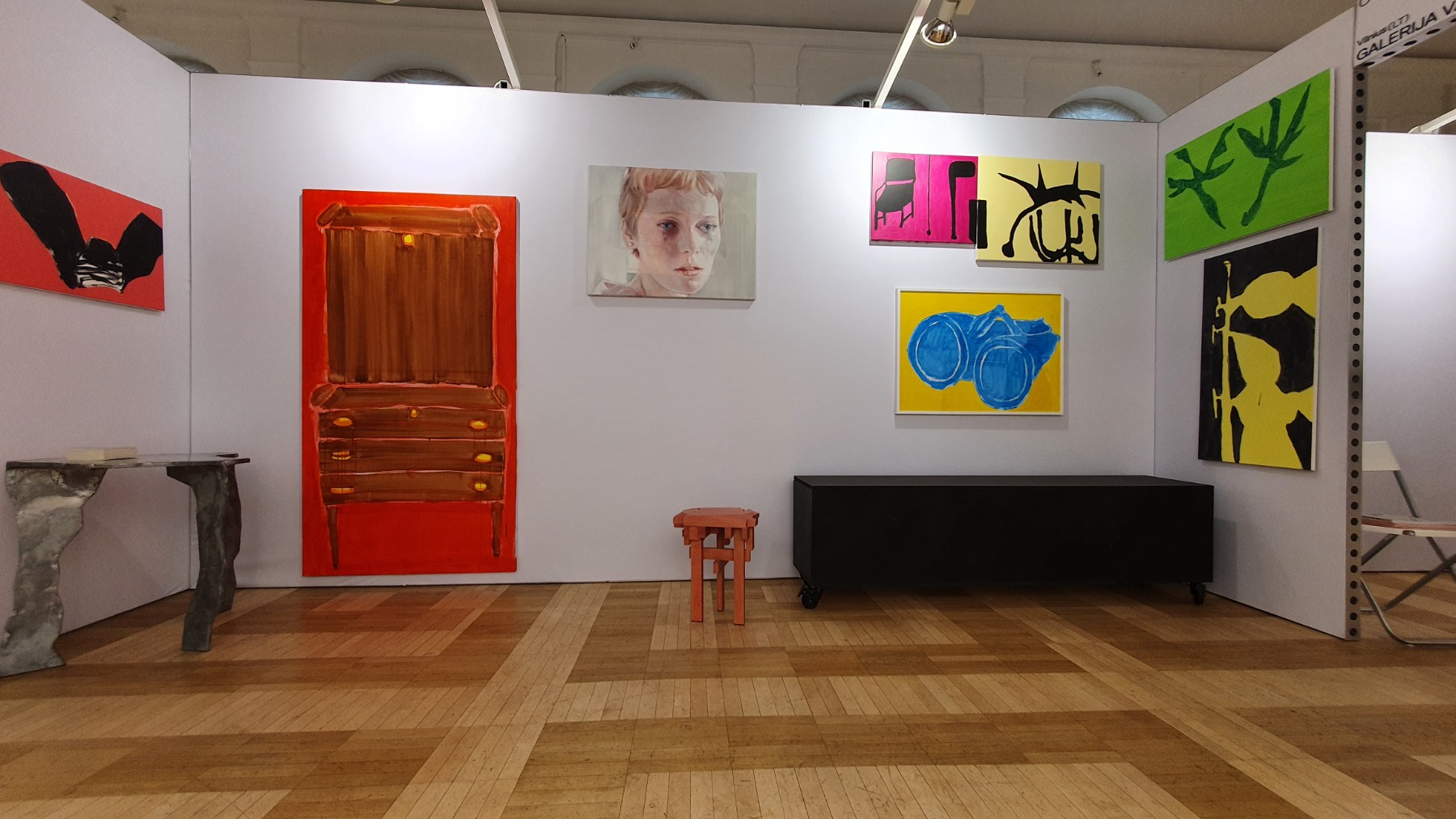
An interesting observation was the fact that Latvia’s Māksla XO and Lithuania’s Galerija Vartai – geographically the two most northerly countries participating – brought to Vienna rather vibrant exhibitions expressing what one could call southern flair.
Ukrainian participation
Ukraine was represented at the fair by three galleries – The Naked Room, TSEKH Gallery, and Voloshyn Gallery – and strong presentations by renowned artists.
Kyiv/Vilnius-based TSEKH Gallery participated in the fair with a consistently convincing performance by the outstanding watercolourist Ievgen Petrov (1972). This year his paintings – characterised by apt documentation of sometimes rather unflattering social aspects – were joined by sculptural works.
The Naked Room (Kyiv). Photo: viennacontemporary
Kyiv’s The Naked Room presented large-scale works by the internationally acclaimed Pavlo Makov (1958), the artist featured in this year’s Ukrainian national pavilion at the Venice Biennale. Curators Lizaveta German and Maria Lanko had selected five etching prints for the booth that outline different periods of the artist’s career and reveal his ability to balance between fact and fiction, documentation and mystification. The gallery sold four of the artist’s works at the fair for a total of €120,000.
Voloshyn Gallery (Kyiv). Photo: viennacontemporary
Voloshyn Gallery participated in the fair with a group project by Lesia Khomenko, Oleksiy Sai and Maria Sulymenko. The centrepiece of the stand was Oleksiy Sai’s poignant work from a series of landscapes of bombed Ukraine, which the artist began in 2015 as a reaction to the Russian Armed Forces’ masked invasion of Ukraine’s Crimean Peninsula, while Lesia Khomenko’s work was created during her residency in Warsaw (where the artist had fled as a war refugee) spent painting portraits of her husband’s war comrades from photographs taken in the army. Maria Sulymenko, meanwhile, shared her enigmatic and mystical watercolour depictions of environments encoded with loneliness and fear.
Volker Diehl Gallery (Berlin). Photo: Volker Diehl Gallery
Ukrainian artists were also presented by galleries in other countries, such as Nika Kupyrova (1985) by Ljubljana’s Ravnikar Gallery Space, and Ukrainian abstract painter Tibery Szilvasi (1947) by Germany’s Volker Diehl Gallery, which also presented Szilvasi’s publication The Sky over Kyiv at the fair. The artist documents in diary format the time between February 24, the outbreak of the war, to April 7, ending each day with the notation “Alive”; it is accompanied by small-scale works on paper and canvas executed by the artist as something akin to a daily retreat.
STATEMENT UKRAINE – A special programme dedicated to Ukraine
Responding responsibly to current geopolitical developments, viennacontemporary implemented the STATEMENT UKRAINE special group of events consisting of: the exhibition The Cockerel with Black Wings: A Recovered Heirloom at the venue das weisse haus, which featured fifteen Ukrainian and international artists; a panel discussion; and an auction of NFT works. The implementation of the programme was entrusted to a competent core of Ukrainian professionals – Kateryna Filyuk, Exhibition Curator, and Yana Barinova, Development Manager of the fair.
Nikita Kadan’s We are the price (2022) – at the charity fundraiser by Christine König Galerie. Photo: Agnese Čivle
The day before the opening of the fair, the STATEMENT UKRAINE panel discussion “Ukrainian Culture on the Way to the EU” took place, featuring art and culture professionals from Ukraine and Austria. The three-hour panel discussion was held in the Aula of Sciences, where Vienna’s Christine König Galerie invited attendees to purchase the work We are the price by Ukrainian artist Nikita Kadan (1982), all proceeds of which will go towards the construction of a shelter and school in an area destroyed by the Russian army near the Slovak border.
The Ukrainian people are the price of peace in Europe, although panellist Tanja Maljartschuk, a writer, recalled how not that long ago, a Viennese taxi driver was quite perplexed about where she had said she comes from, even asking her: “Is this ‘Ukraine’ in America or Asia...?”. Until recently, few European citizens knew what separated their secure existence from the mindless and heartless aggressor state of Russia. Now that the architecture of European security has been shaken to the core, the question of where Ukraine is no longer exists. A part of Ukraine is now found in all European countries – these are people who, because of Russian terror, have been forced to flee their home country. They also include a large number of cultural and artistic professionals, some of whom are exceedingly highly qualified.
What can Europe do, and what has it done so far, to facilitate the integration of Ukrainian art and culture professionals? How can we prevent skilled talent from being misused as cheap labour? Or to not be misused at all? How can a nation’s cultural sector survive during war? How can cultural heritage be preserved when it is being subject to destruction during a military invasion? These and other questions were brought to the forefront of the discussions, with migration researcher Judith Kohlenberger emphasising that talent and skills that are idle or undervalued eventually disappear over time, as does the motivation to put them to use.
Austria’s support for Ukrainian cultural sector workers was presented by Peter Launsky-Tieffenthal, Secretary General for International Relations, who pointed to various initiatives, including Office Ukraine. Shelter for Ukrainian Artists, which has been set up for Ukrainian artists and cultural workers who have fled the war to seek refuge in Austria. Launsky-Tieffenthal reminded attendees that the need to support Ukrainian cultural workers, as well as culture in general, will be on Europe’s agenda for a long time to come!
So far, some 500 Russian war crimes against Ukraine’s cultural heritage have been identified. The war is not yet over and the full extent of the loss of cultural heritage is not yet known in order to start practically thinking about cultural resurrection. Yet, what is clear is that European partnership and support for this upcoming task is urgently needed!
Panellist Francesca Thyssen-Bornemisza. Photo: viennacontemporary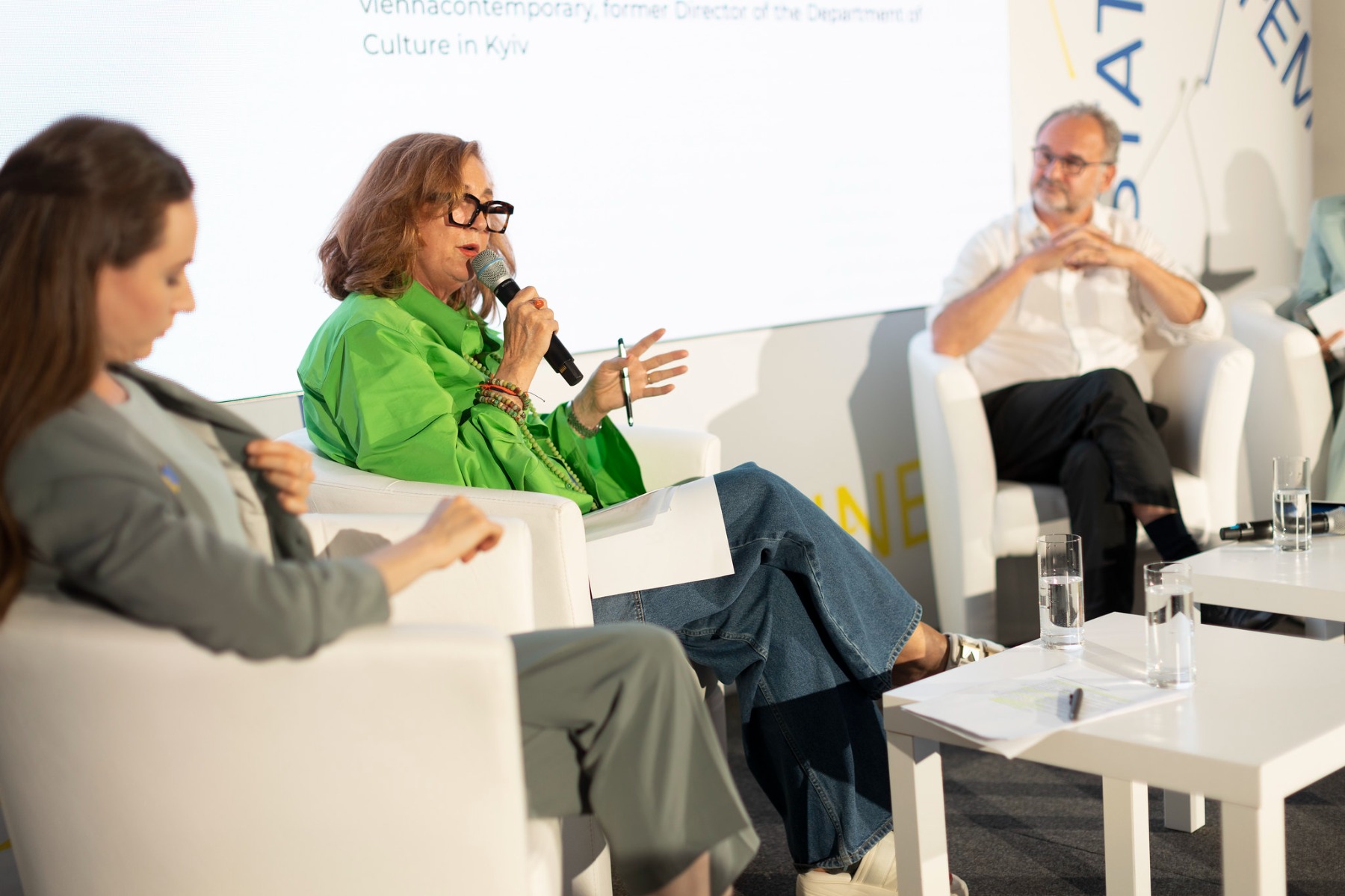
It was repeatedly stressed during the discussions that war destroys memories, narratives and culture. Panellist Francesca Thyssen-Bornemisza, philanthropist and founder of the contemporary art foundation TBA21, fully agreed with this statement. She was one of the first to react to the dramatic events in the early days of the war and launched the Museums for Ukraine initiative, bringing together museum directors and arts professionals to unite in support of Ukraine’s cultural and creative forces. Currently, work is underway on the exhibition In the eye of the storm. Modernism in Ukraine 1900–1930 at the Museo Thyssen-Bornemisza in Madrid, which will open this November. Thyssen-Bornemisza stressed that it is obvious who is on the opposing front in the culture war, pointing out that just like Stalin destroyed the intelligentsia, now Russia is deliberately destroying Ukraine’s cultural heritage. Thyssen-Bornemisza is countering this, reminding us that the Ukrainian avant-garde played a major role in European modernism and was formed in Kyiv, and not Moscow, which is particularly important to keep in mind now.
Photo: viennacontemporary
Another highlight of the discussion was a call by Ukrainian cultural critic and curator Kateryna Botanova to think about who it is that stands behind our favourite museums and theatres. How are they programming society? Botanova reminds us that Russian money has so far been generously pumping into European culture, meanwhile, Ukrainian identity has been denigrated. This was confirmed by President Putin’s statement shortly after the outbreak of the war, in which he said that Ukraine is an integral part of Russia’s “historical, cultural and spiritual space”, as well as by Hermitage director Mikhail Piotrovsky’s remarks in June about Russia’s cultural export ambitions, which amount to yet another “special operation”.
Kisterem (Budapest). Photo: viennacontemporary
Karpuchina Gallery (Prague). Photo: viennacontemporary
SANDWICH (Bucharest). Photo: viennacontemporary
Work by Julia Belova at Galerie Rudolf Leeb (Vienna) stand - ZONE1. Photo: viennacontemporary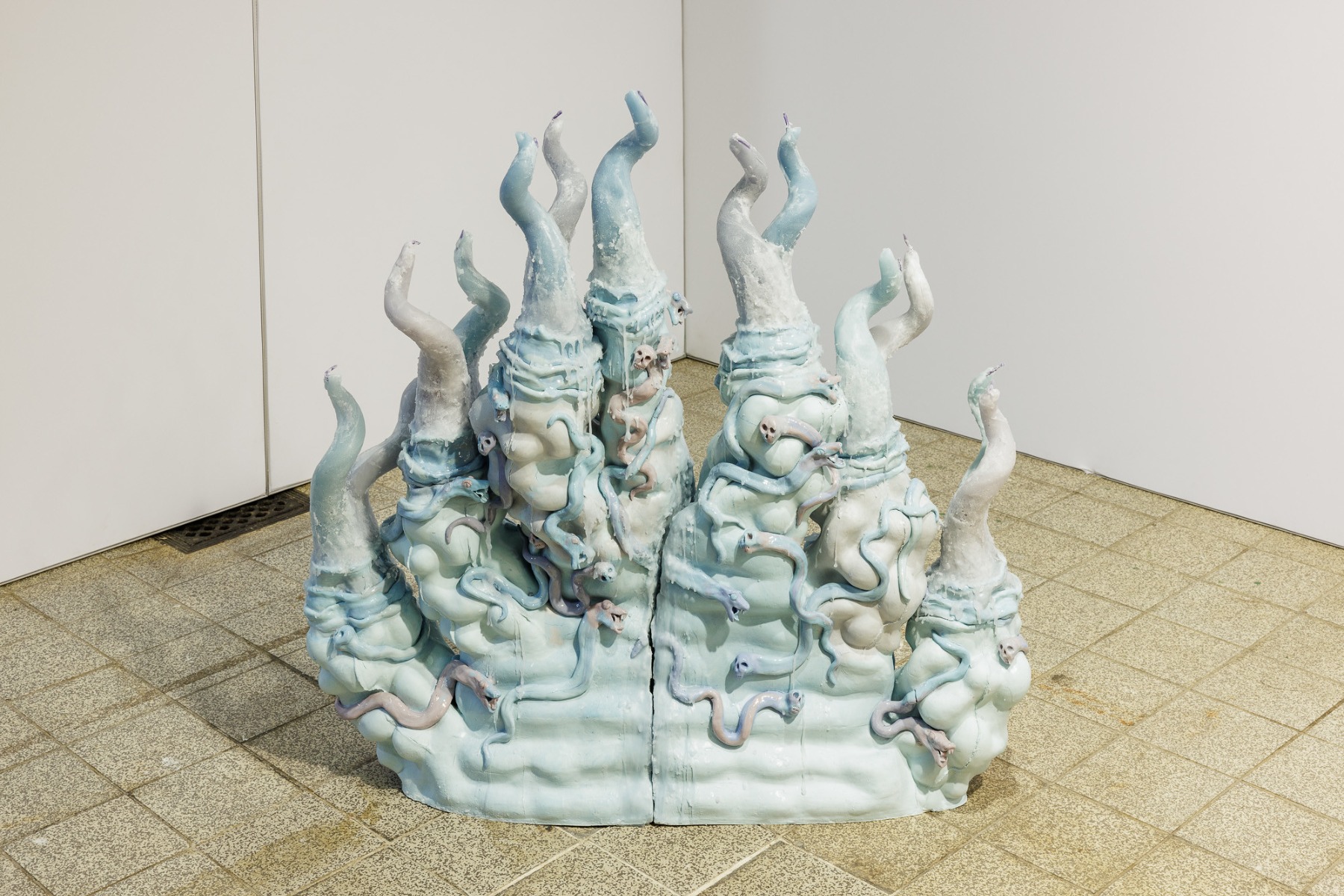
Ravnikar Gallery Space (Ljubljana). Photo: Agnese Civle
ZAHORIAN & VAN ESPEN (Bratislava / Prague). Photo: ZAHORIAN & VAN ESPEN
Window Project (Tbilisi), Photo: viennacontemporary
Structura (Sofia). Photo: Structura
Le Guern Gallery (Warsaw). Photo: viennacontemporary
TSEKH gallery (Kyiv I Vilnius). Photo: Elina Norden
Galerija Photografija (Ljubljana). Photo: Agnese Civle
